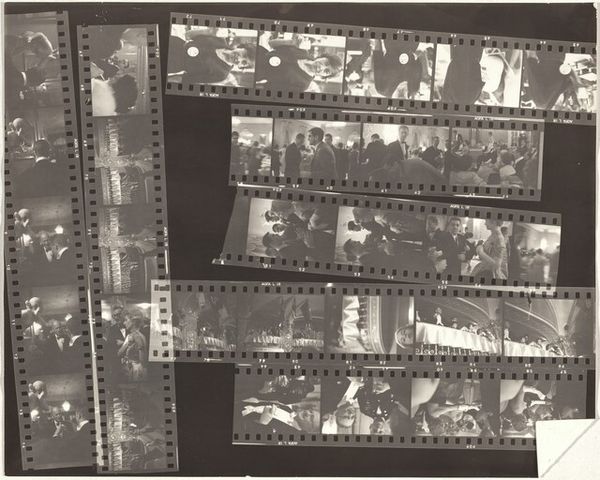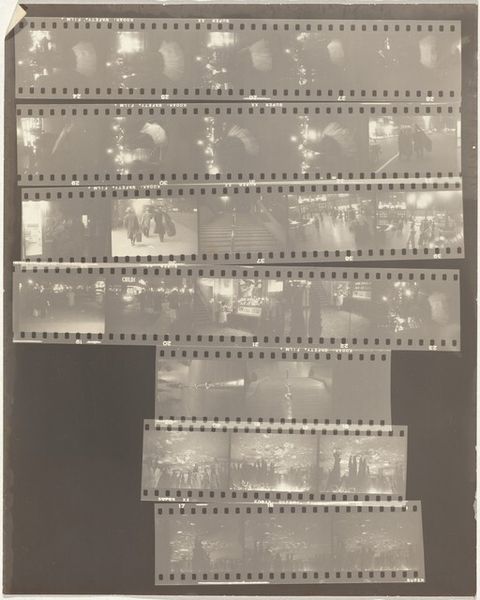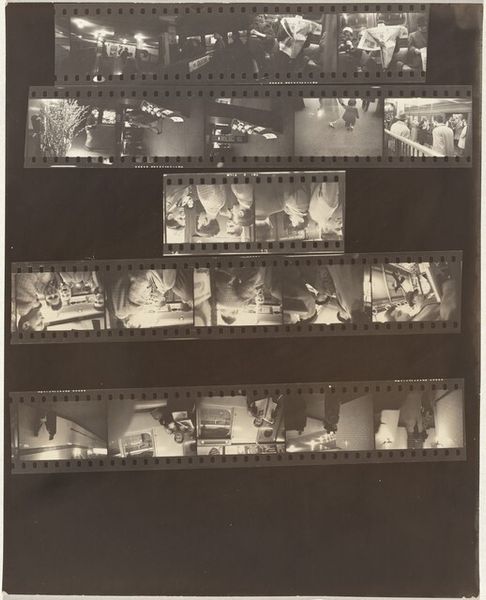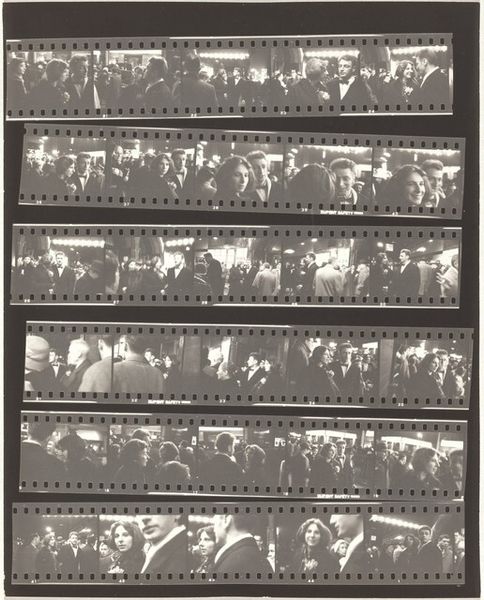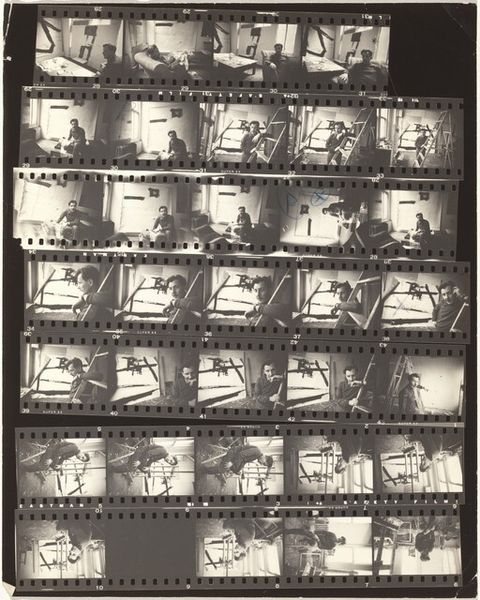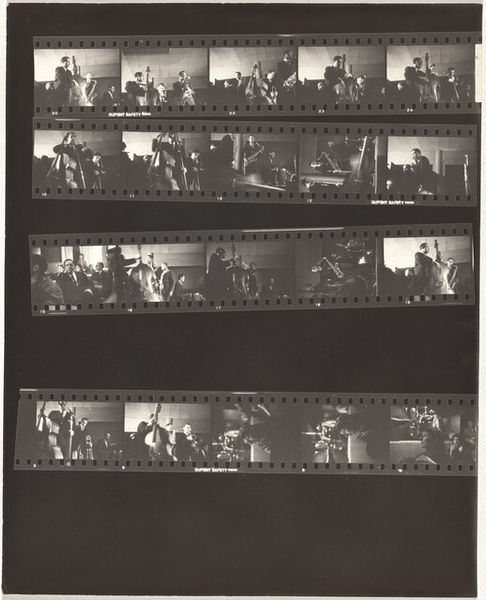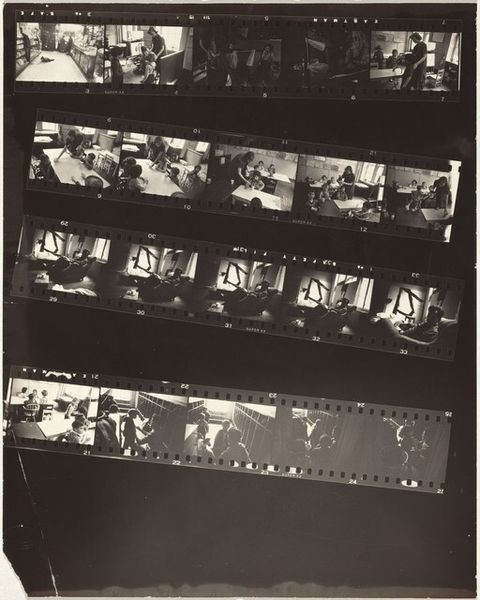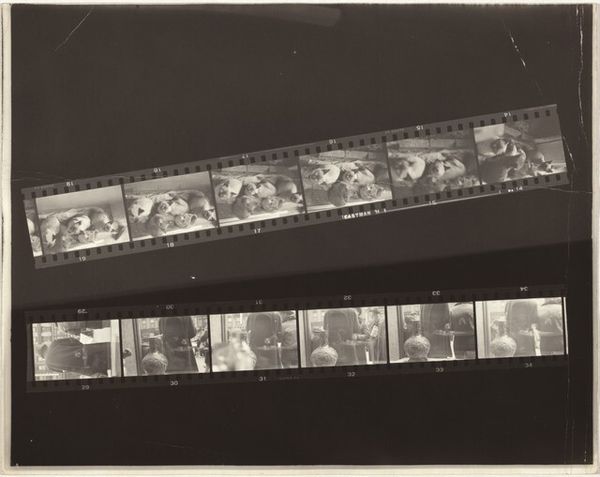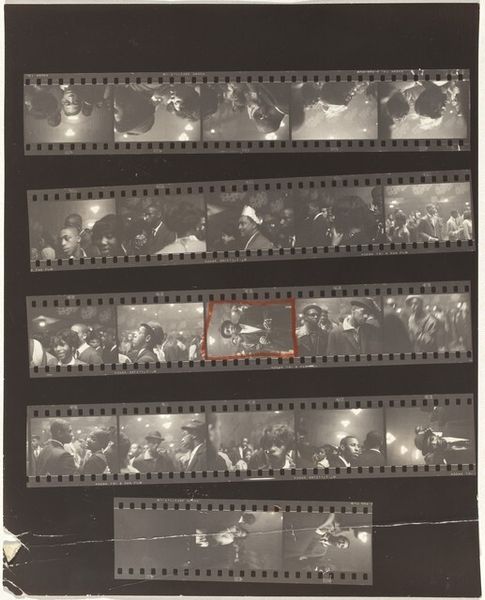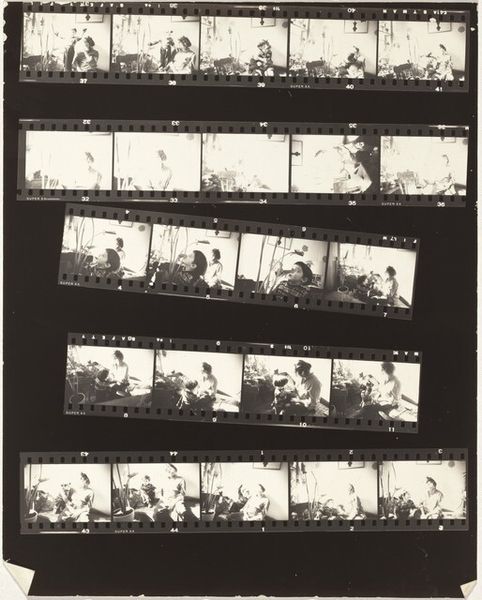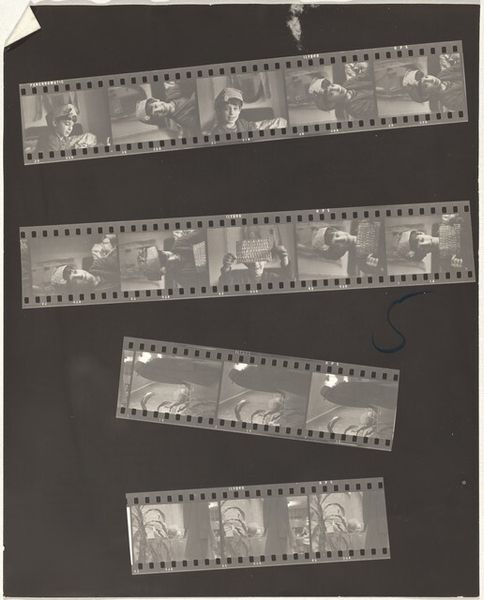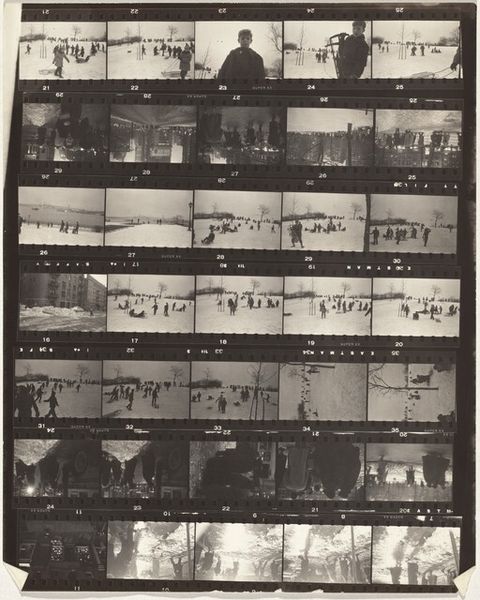
photography, gelatin-silver-print
#
print photography
#
landscape
#
street-photography
#
photography
#
gelatin-silver-print
#
modernism
#
realism
Dimensions: sheet: 25.2 x 20.2 cm (9 15/16 x 7 15/16 in.)
Copyright: National Gallery of Art: CC0 1.0
Curator: Looking at Robert Frank's 1957 gelatin silver print, "Church parade--New York City no number", the first thing that strikes me is the raw honesty of the images, almost like candid outtakes from a larger story. Editor: Yes, a little like eavesdropping, isn’t it? A fly-on-the-wall glimpse into a Sunday tradition. The composition of the strips themselves as the art object seems very important here; each a cultural artifact of the age in its own way. Curator: It feels very emblematic of Frank’s overall project—dissecting the American social landscape. The way the film strip is presented makes it even more impactful. There’s something very vulnerable and unfiltered about it. He lays bare these moments; his perspective is present. I mean, this feels different from his other images where he selected a single photo for presentation. The full contact strip is far less formal; it reveals so much. Editor: Right, like peering into someone's subconscious. The recurring motif of "church" juxtaposed against, presumably, everyday life—that poses a certain cultural tension, right? Especially viewed through Frank's lens, given his reputation for capturing the gritty side of American life. The placement and order seem relevant: Is Frank implicitly suggesting a disconnect between ritualized spirituality and the street’s mundane realities? Or does the ordering suggest the way the images played out over the course of the event? It makes you ask if people who participate in those parades live differently during the rest of the week. Curator: Absolutely. He challenges the idealized notions of faith and community with his often unsparing portrayals. There is something dreamlike about how the city lights interact with the text. Editor: What lingers with me is that these strips become symbolic containers of memory, miniature time capsules holding complex emotions related to faith, community, and urban existence in 1950s New York. Curator: I couldn't agree more. For me, the entire object is just a poignant meditation on how we capture, curate, and, ultimately, come to understand fragments of collective identity. Editor: Beautifully put! A meditation that echoes through the decades.
Comments
No comments
Be the first to comment and join the conversation on the ultimate creative platform.
